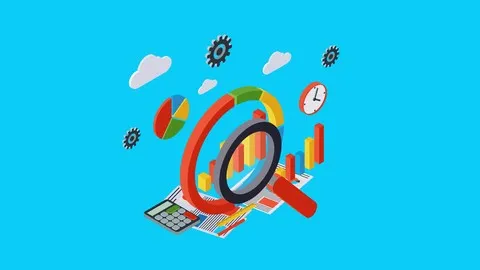
Fundamentals of Data Analysis for Big Data 
This course provides an introduction to the fundamentals of data analysis for big data. Learn how to run basic univariable analysis, simple regression analysis, instrumental variables analysis, probit/logit analysis, fixed effects regression, and difference-in-differences analysis on a dataset. Gain the skills to analyze and interpret data to make informed decisions. ▼
ADVERTISEMENT
Course Feature
![]() Cost:
Cost:
Paid
![]() Provider:
Provider:
Udemy
![]() Certificate:
Certificate:
No Information
![]() Language:
Language:
English
![]() Start Date:
Start Date:
Self Paced
Course Overview
❗The content presented here is sourced directly from Udemy platform. For comprehensive course details, including enrollment information, simply click on the 'Go to class' link on our website.
Updated in [June 30th, 2023]
This course provides an introduction to the fundamentals of data analysis for big data. Students will learn how to run basic univariable analysis of means, medians, and percentiles on a dataset, as well as how to run simple regression analysis, instrumental variables analysis, probit/logit analysis, fixed effects regression, and difference-in-differences analysis on a dataset. By the end of the course, students will have a better understanding of the various methods of data analysis and how to apply them to their own datasets.
[Applications]
The application of the Fundamentals of Data Analysis for Big Data course can be used to gain a better understanding of the data analysis process. It can be used to gain insights into the relationships between variables, as well as to identify potential areas of improvement. Additionally, the course can be used to develop skills in running basic univariable analysis of means, medians, and percentiles, as well as more advanced techniques such as regression analysis, instrumental variables analysis, probit/logit analysis, fixed effects regression, and difference-in-differences analysis. These skills can be applied to a variety of data analysis tasks, such as forecasting, predictive modeling, and optimization.
[Career Path]
One job position path that is recommended for learners of this course is a Data Analyst. A Data Analyst is responsible for collecting, organizing, and analyzing data to help inform business decisions. They use a variety of tools and techniques to identify trends, patterns, and relationships in data sets. They also create reports and visualizations to communicate their findings to stakeholders.
The development trend for Data Analysts is to become more specialized in their field. As the amount of data available to businesses continues to grow, Data Analysts are expected to become more knowledgeable in specific areas such as machine learning, artificial intelligence, and predictive analytics. They will also need to be able to use more advanced tools and techniques to analyze data and draw meaningful insights. Additionally, Data Analysts will need to be able to communicate their findings in a clear and concise manner to stakeholders.
[Education Path]
The recommended educational path for learners of this course is a degree in Data Science or Big Data Analytics. This degree typically involves courses in mathematics, statistics, computer science, and data analysis. Students will learn how to use data to solve problems, develop algorithms, and create models. They will also learn how to interpret and visualize data, as well as how to use data to make decisions.
The development trend of this degree is to focus on the application of data science and analytics to real-world problems. This includes the use of machine learning, artificial intelligence, and natural language processing to analyze large datasets. Students will also learn how to use data to create predictive models and develop strategies for decision-making. Additionally, they will learn how to use data to create visualizations and communicate insights.
Pros & Cons

Provides better understanding of statistics in simple terms.

Logical and direct explanation of each term.

Instructor is knowledgeable and speaks well.

Assumes strong understanding of statistics for advanced analysis.

Lack of real-life examples and exercises.

Course should be more Big Data intensive.
Course Provider

Provider Udemy's Stats at AZClass
Discussion and Reviews
0.0 (Based on 0 reviews)
Explore Similar Online Courses

Introduction to Korean - Online Course

New Zealand Landscape as Culture: Wai (Water)

Python for Informatics: Exploring Information

Social Network Analysis

Introduction to Systematic Review and Meta-Analysis

The Analytics Edge

DCO042 - Python For Informatics

Causal Diagrams: Draw Your Assumptions Before Your Conclusions

Whole genome sequencing of bacterial genomes - tools and applications

Applied Data Science: An Introduction

Big Data Integration and Processing


Start your review of Fundamentals of Data Analysis for Big Data